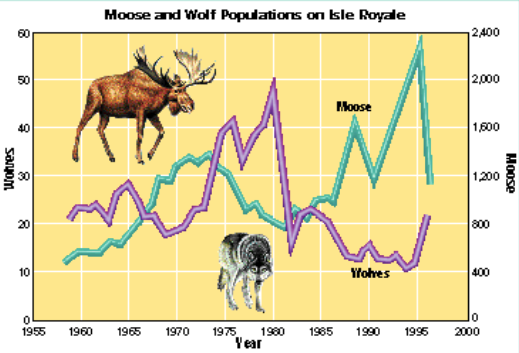Pattern Recognition
- tombond912
- Oct 12, 2020
- 2 min read
Look at the graph below and describe the relationship between the wolves and the moose. What is the graph telling you? Why is this happening to each population? Do the populations affect each other?

For this post, I will dedicate it to Brooke's Pattern Recognition activity. She created a lot of activities that were all great for Science but I chose this one for a number of reasons. During my time as a leave replacement for 7th grade science, we dedicated multiple assignments to a graph similar to this. The skill of pattern recognition is important for scientists and critical thinkers in general. This graph can tell a lot of stories and the implications of it don't only focus on wolves, and moose. Other environmental factors can effect the story that is played out in this graph. Students ability to recognize what those factors might be and the strength of their argument for why can give the educator great feedback for their competency in pattern recognition/graph analysis.
When looking at the graph, we need to identify the relationship between the moose and wolf population. In graphs similar to this, the trend is typical that as moose population rises, the wolf population will rise shortly after. Once the wolf(predator) population rises, the moose population will soon decrease. Once the moose population decreases, the wolf population will shortly do the same due to a lack of food. In this graph, there is an outlier with the extreme decline spike around the year 1982. This must be due to a lack of food, bad winter, parasite or hunting. After the sharp decline, the moose population naturally increased due to a lack of predator(wolves). What is important to note is the lack of stability within this relationship. This leads me to believe that outside influences have a large impact on the relationship between moose and wolves. I was fascinated by this and did a little research on my own.
I was able to learn quite a bit about the relationship of Wolves and Moose on Isle Royale. One reason for their population decline that never occurred to me was due dispersal. When the wolf population got much larger, wolves became extra territorial forcing wolves to disperse into smaller groups and expand their territory. This proved to be unsuccessful due to lack of strength in pack hunting. Fascinating.
Along the way I found out this unique fact - "Wolves have 280 million olfactory receptors in their nasal passages – more than the number of visual receptors in their retinas. Wolves can detect odors that are hundreds to millions of times fainter than what humans can detect."
Hey, who knew!
Great activity, and certainly something I will use in my classroom one day. Thank you for sharing Brooke!



Comments